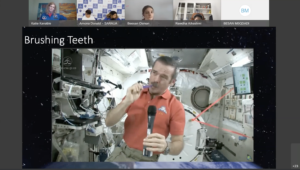Sharjah Girl Guides Receive World-Class Education In Space And Planetary Missions At Virtual NASA-Certified Space Camp

Young Sharjah Girl Guides, aged 11 to 14, learnt what it is like to live and work in space at a NASA-certified programme conducted recently where a space sector expert from NASA shared his knowledge and inspired the next generation of explorers and space pioneers at the virtual camp.
Through interactive and engaging sessions in space sciences,25SGGsreceived a world-class education in space and inter-planetary missions, including an insight into the regional and global significance of the UAE’s Emirates Mars Mission, at the online space summer camp.
Using NASA’s and the UAE’s space curriculum, participants got an opportunity to design and launch their own model landers, rovers, and space rockets, and immerse themselves in the fascinating world of the cosmos over a five-day period.
A series of hands-on activities including ‘instant challenge’ sessions were designed to test problem-solving capabilities of participants, sharpen their critical thinking skills, and inspire them to dive deeper into the fields of science, space, and engineering.
The Guides were also given an insight into the UAE’s ‘Hope’ or Emirates Mars Mission,which marked a major milestone for Mars exploration when it successfully entered orbit around the Red Planet in February this year. ‘Hope’, the Arab world’s first interplanetary probe, is providing the UAE and the global scientific community with novel data that are already advancing science and furthering humanity’s knowledge of another planet.
The thirst for knowledge of the young space enthusiasts was evident in the queries they raised during the five-day space camp, including on various aspects of space exploration. On the concluding day of the space camp, NASA engineer Sylvester Shanle responded to each of the queries shared several videos and stunning space images with the participants. These included videos of the landing of Curiosity rover on Mars, and visuals of the majestic Sombrero or Mexican hat Galaxy; the first and only image of the black hole and its shadow; and one of the best-known pictures of the Eagle Nebula taken by the Hubble Space Telescope highlighting three giant, gaseous columns called the ‘Pillars of Creation’ – each of which, he explained, contain the materials for building new stars.



